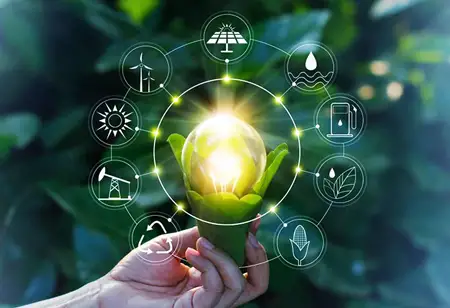Thank you for Subscribing to Energy Business Review Weekly Brief
The Impact of Solar Design on Energy Savings
In an era where energy efficiency and sustainability are paramount, the integration of solar design into architectural planning.

By
Energy Business Review | Tuesday, November 14, 2023
Stay ahead of the industry with exclusive feature stories on the top companies, expert insights and the latest news delivered straight to your inbox. Subscribe today.
Solar design significantly reduces energy consumption by harnessing the sun's energy, reducing fossil fuel reliance, and carbon emissions. Government incentives and long-term economic benefits make solar design a wise choice.
FREMONT, CA: In an era where energy efficiency and sustainability are paramount, the integration of solar design into architectural planning has emerged as a powerful tool to reduce energy consumption and promote a cleaner environment. Solar design encompasses the incorporation of solar panels, passive solar features, and other technologies into buildings to harness the power of the sun. The impact of solar design on energy savings is profound, affecting utility bills and also the overall environmental footprint of a structure.
Harnessing Solar Power
One of the most direct ways solar design contributes to energy savings is by harnessing the abundant and renewable energy source of the sun. Solar panels, photovoltaic cells, and solar thermal systems convert sunlight into electricity and heat. This electricity can be used to power homes, while solar thermal systems can heat water for domestic use or space heating. By doing so, solar design reduces the reliance on fossil fuels and decreases greenhouse gas emissions, thereby lowering energy consumption and its associated costs.
Passive Solar Design
Beyond active solar technologies like panels and cells, passive solar design principles also play a significant role in saving energy. This approach focuses on optimising the building's layout, orientation, and materials to naturally capture and distribute sunlight for heating and cooling. Strategies include maximising south-facing windows to allow sunlight to enter during the winter and employing shading techniques to block excessive heat during the summer. These passive measures can reduce the need for artificial heating and cooling systems, leading to substantial energy savings.
Net-Zero Energy Buildings
Solar design is a key element in the development of net-zero energy buildings, which generate as much energy as they consume. By combining efficient building envelopes, energy-efficient appliances, and solar panels, these structures can operate entirely off the grid or even feed excess energy back into it. Net-zero energy buildings have the potential to revolutionize the way people think about energy consumption, as they demonstrate that it is possible to reduce the carbon footprint significantly through smart architectural choices.
Government Incentives
In many countries, governments offer incentives and subsidies to encourage the adoption of solar design in residential and commercial buildings. These incentives may include tax credits, grants, and rebates, making solar installations more financially accessible. Such financial assistance promotes the transition to clean energy and also accelerates energy savings by reducing the upfront costs of solar design implementation.
Long-Term Economic Benefits
While the initial cost of integrating solar design elements can be significant, the long-term economic benefits are undeniable. Solar panels have a lifespan of 25 years or more, and their operation and maintenance costs are relatively low. Over time, energy savings add up, and homeowners and businesses can recoup their initial investments. In some cases, surplus energy generated can be sold back to the grid, providing an additional source of income.
The impact of solar design on energy savings is clear and multifaceted. It reduces energy bills and also contributes to a more sustainable and environmentally responsible future. By embracing solar design, individuals, businesses, and governments can take a substantial step toward reducing energy consumption, decreasing greenhouse gas emissions, and promoting a cleaner, more sustainable world.






